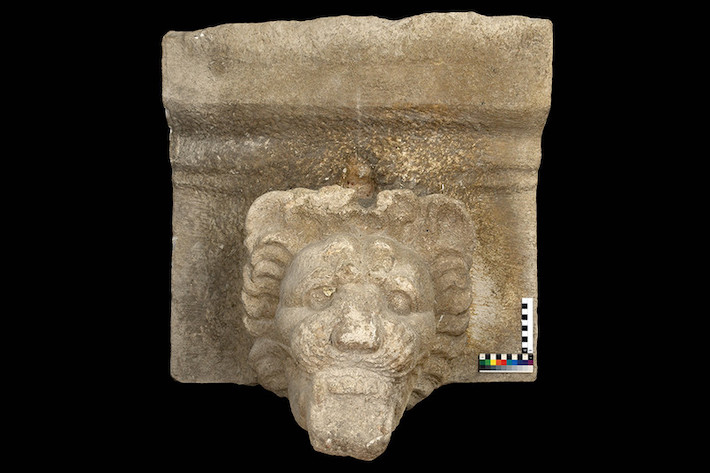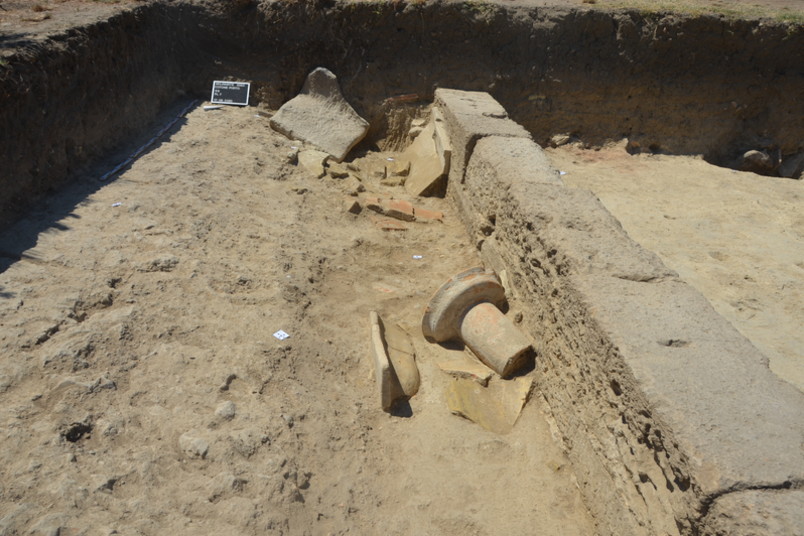Lion’s Head Sculpture Discovered in Sicily
A still unfinished marble gargoyle in the form of a lion’s head in Sicily delights researchers.

During excavations in Sicily, a research team led by archaeologists from the Ruhr University in Bochum, Prof. Dr. Jon Albers made a spectacular find: they discovered a marble lion’s head on a street in the immediate vicinity of the ancient eastern harbor of Selinunte, which was intended to drain off rainwater as a detail of a temple roof.
The gargoyle is 60 centimeters high and thus significantly larger than similar finds from the region. The material, which was rare and valuable in western Greece, also makes it special.

The lion’s head is unusually well preserved and still unfinished. “We cannot yet say whether it was intended for the well-known Temple E in Selinunte or for another, as yet unknown temple,” says Jon Albers.
So far only nine known temples with marble lions
The lion’s head is a so-called sima, i.e. the top end of the roof, behind which the rainwater collected and was then drained off. Gargoyles in the shape of lion heads were used to divert the water.
“While this decoration was made of terracotta in the 6th century BC in particular, the first stone simen were found especially in the 5th century BC,” explains Jon Albers.
Particularly well-known are the finds from the Temple of Heracles in Agrigento and the Temple of Victory in Himera, which are at the beginning of this development and were made from high-quality local limestone. Both had the largest simen of this type at around 70 centimeters high.
The new find from Selinunte is also very high at around 60 centimeters and significantly larger than other simen in the region. However, it was made of marble, a rare and valuable material in western Greece. “This marble was imported to Sicily from the Greek islands – probably from Paros,” says Jon Albers.
“In total, only nine temples from the 5th century BC are known in all of southern Italy and Sicily that had a sima made of Greek marble.” The roofs were discovered mainly in the 19th and early 20th centuries.
A new, tenth temple
“The newly found Sima from Selinunte cannot be compared to any of these temples and is therefore part of a tenth temple with such a marble roof,” concludes Jon Albers. The researchers cannot yet decide whether the object was once intended for the well-known Temple E in Selinunte or for another monumental temple that is still unknown today.
However, the Sima was apparently not yet installed, because it has not yet been finished. Although the block is much better preserved than other roofs with lion’s head spears, the characteristic water outlet was not yet incorporated.
The rear lion’s mane is also missing, and the decoration at the top of the plate is not yet finished. “Through this condition, the find allows us to “We also want to better understand the manufacturing processes for such architectural parts,” says the archaeologist happily.
“Since the find comes from the harbor zone and the immediate surroundings of the workshop district of Selinunte, it allows further conclusions to be drawn about the city’s trade contacts and the technical skills of the ancient residents of Selinunte.